
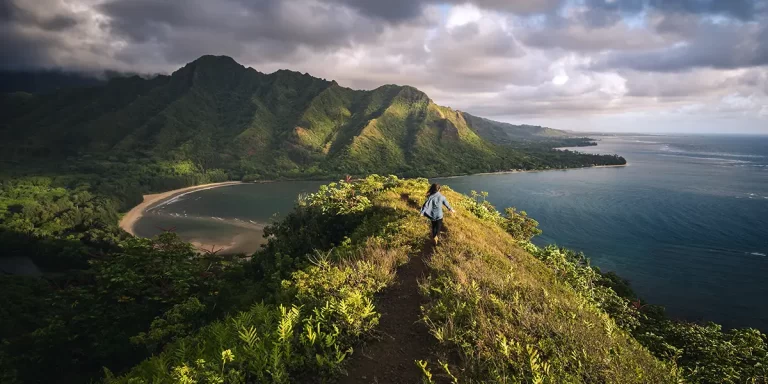
Backpacking in Hawaii offers a truly extraordinary and diverse experience for outdoor enthusiasts. This archipelago of volcanic islands boasts breathtaking landscapes, from lush rainforests and cascading waterfalls to rugged coastlines and dramatic cliffs.
Popular destinations like the Kalalau Trail on the island of Kauai, with its stunning Napali Coast, and the Kilauea Iki Trail in Hawaii Volcanoes National Park, where you can hike across a solidified lava lake, are must-visits for any backpacker.
In this guide, we’ll provide you with essential tips and the TOP 5 multi-day trails to conquer in Hawaii. Whether you’re a seasoned thru-hiker or a newcomer to backpacking, these islands promise an adventure like no other, where you’ll be immersed in stunning natural beauty and rich cultural heritage.
Intrigued? Let’s get started on your Hawaiian backpacking adventure.
Discover Hawaii’s most breathtaking backpacking trails:
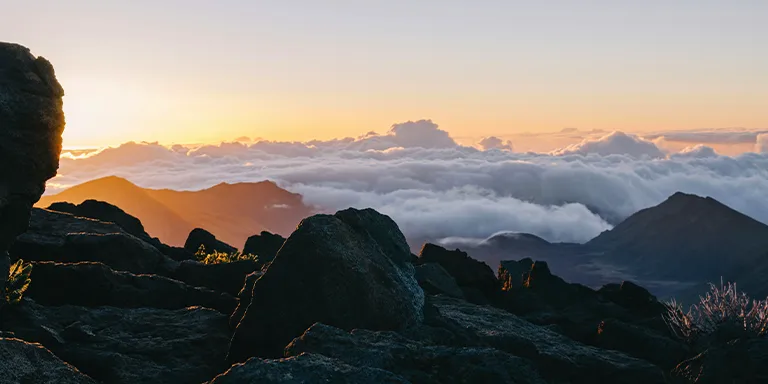
Length: 20.2 mi / 32.5 km
Type: Out and back
Difficulty: Hard
Elevation Gain: 4386 ft / 1337 m
Location: Haleakalā National Park – Maui
Estimated Hiking Calorie Burn: 7700 calories
More Details: See on AllTrails
Embark on a challenging yet rewarding 20.2-mile out-and-back adventure near Kula, Maui. This well-maintained, year-round trail offers stunning views and opportunities for solitude. Consider spending an extra night at Palikū, starting at Halemau’u, and returning via the sliding sands trail. Be prepared for varying weather and limited cell service as you create unforgettable memories in Maui’s natural wonders.
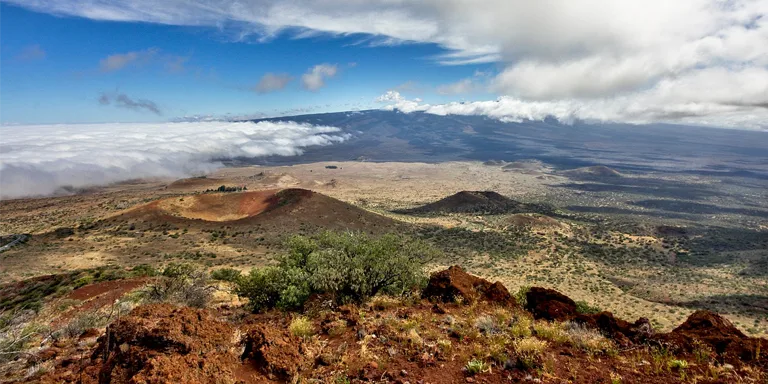
Joe Parks from Berkeley, CA, CC BY 2.0, via Wikimedia Commons
Length: 36.1 mi / 58 km
Type: Out and back
Difficulty: Hard
Elevation Gain: 7139 ft / 2176 m
Location: Hawai’i Volcanoes National Park – Hawaii
Estimated Hiking Calorie Burn: 15 000 calories
More Details: See on AllTrails
Embark on a strenuous 36.1-mile out-and-back trail near Hawaii National Park, ideal for experienced adventurers seeking solitude from April to September. Pay the entrance fee and navigate vehicle restrictions on Mauna Loa Road. Trek through challenging terrain and lava fields to reach Mauna Loa’s peak and cabin, or start at the Observatory for a shorter route. Prepare for a slower pace, temperature variations, and marvel at the stunning diversity of lava rock formations on this epic, multi-day hike.
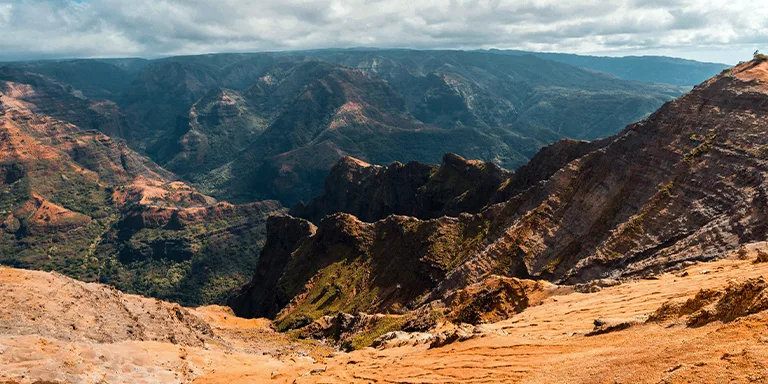
Length: 11.2 mi / 18 km
Type: Out and back
Difficulty: Hard
Elevation Gain: 3976 ft / 1212 m
Location: Waimea Canyon State Park – Kauai
Estimated Hiking Calorie Burn: 5450 calories
More Details: See on AllTrails
Embark on a challenging 11.2-mile out-and-back trail near Kekaha, Kaua’i, ideal for backpacking, birding, and camping. This popular year-round trail offers solitude and stunning Waimea Canyon views. Arrive early for limited parking and enjoy the steep first 2 miles, followed by a flat section along the river. Best panoramic views are 1.5 miles down on the red dirt ridge before the shaded forest. Stop at the first river crossing for the best views or continue to campsites. Bring ample water, waterproof footwear, and consider obtaining a camping permit in advance.
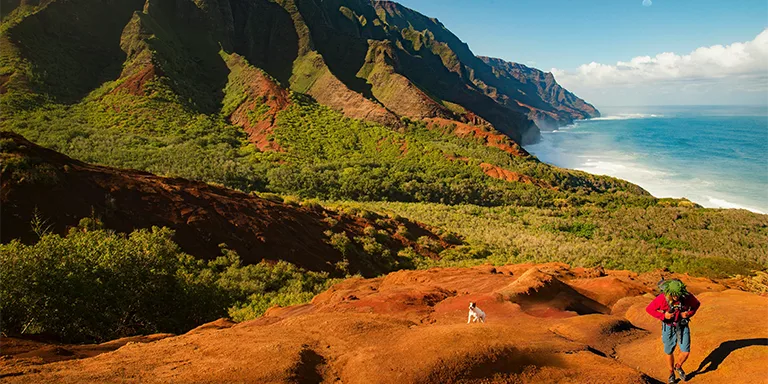
Length: 19.8 mi / 31.9 km
Type: Out and back
Difficulty: Hard
Elevation Gain: 6512 ft / 1985 m
Location: Ha’ena State Park – Kauai
Estimated Hiking Calorie Burn: 8300 calories
More Details: See on AllTrails
Embark on the challenging 19.8-mile Kalalau Trail near Hanalei, Kaua’i, suitable for experienced adventurers. Marvel at stunning Pacific Ocean and lush jungle mountain views along the Na Pali coastline. Start at Ke’e beach parking lot in Ha’ena State Park, with options for day hikes to Hanakapiai Falls or longer treks requiring camping permits. Exercise caution during heavy rains and high surf. Despite the challenges, this trail offers an incredible, once-in-a-lifetime backpacking experience.
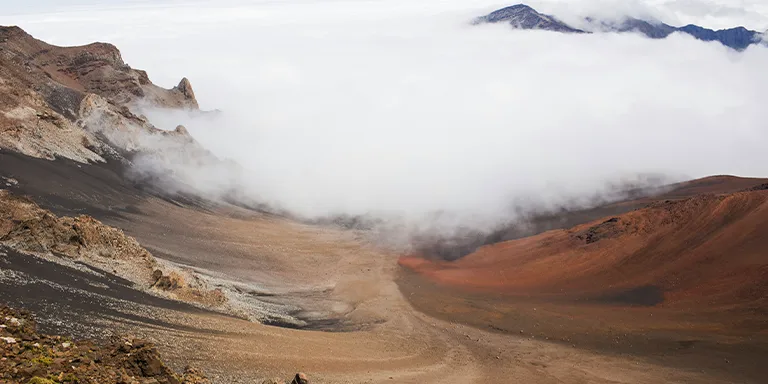
Length: 11 mi / 17.7 km
Type: Point to point
Difficulty: Hard
Elevation Gain: 2066 ft / 630 m
Location: Haleakalā National Park – Maui
Estimated Hiking Calorie Burn: 4900 calories
More Details: See on AllTrails
Tackle the challenging 11-mile Sliding Sands Halemau’u trail near Kula, Maui, a popular year-round route for experienced backpackers, campers, and hikers. This semi-loop trail starts with a spectacular descent into the Haleakala crater, featuring silverswords and otherworldly landscapes, then merges with the Halemau’u trail, transitioning to grasslands and wildflowers before a rugged climb back to the overlook. Camping is available at the Holua cabin. Take your time and be mindful of the elevation challenges.
Hawaii generally has a tropical climate with warm temperatures throughout the year:
Based on what we’ve learned, it’s a good idea to check the weather forecast for the exact time and place you intend to visit. Also, be ready for unexpected weather changes, especially in higher areas where it can be cooler and less predictable.
Before you grab your backpack and head outdoors, take a look at the weather statistics for Hawaii (Honolulu):
| Jan | Feb | Mar | Apr | May | Jun | Jul | Aug | Sep | Oct | Nov | Dec | |
|---|---|---|---|---|---|---|---|---|---|---|---|---|
| High °F | 79 | 79 | 80 | 81 | 83 | 85 | 86 | 86 | 87 | 85 | 83 | 80 |
| Low °F | 68 | 68 | 69 | 71 | 73 | 74 | 74 | 75 | 76 | 75 | 73 | 70 |
| Rainy Days | 7 | 6 | 6 | 4 | 4 | 2 | 3 | 3 | 3 | 5 | 6 | 7 |
Having a campfire while camping in Hawaii is regulated. On most islands, campfires are generally prohibited except in designated fire pits in campgrounds. Permits may be required for campfires depending on location. Certain areas prohibit ground fires year-round. Portable cooking stoves are allowed.
When backpacking in Hawaii, be prepared for rapidly changing weather conditions by packing proper rain gear and layers. Bring plenty of sun protection including a hat, sunglasses, and sunscreen since the sun can be intense. Stay on marked trails as vegetation can be dense. Watch for loose rocks and cliffs when hiking along coastal areas. Check for flash flood warnings if hiking in valleys or streams. Bring more water than you think you’ll need since sources may be scarce. Know basic first aid for treating cuts, scrapes or jellyfish stings from snorkeling. Research any permits required for backcountry camping. Let someone know your itinerary. Exercise caution near shorelines due to large waves and currents.
When you go hiking in Hawaii, you might come across animals like wild pigs, goats, cats, and rodents. It’s important to keep a safe distance from them and not try to get close or feed them. If you see a Hawaiian monk seal or a sea turtle on the beach, make sure to stay at least 150 feet away and don’t disturb them. If you happen to see a snake, just stand still and let it pass without bothering it. Be careful not to touch plants and rocks where centipedes might be hiding. Also, be cautious around cliffs where birds might be nesting. If you encounter a mammal that seems aggressive, make yourself look big and slowly move away. And if you find any injured animals, be sure to report it to wildlife authorities.
When backpacking in Hawaii, fishing can provide a good source of food. Be sure to get the proper permits and know size and catch limits. Pack lightweight, collapsible rods and compact tackle. Small spinners and lures work well for trout in mountain streams and lakes. In coastal areas, pack saltwater gear to surf fish or try your luck from rocky outcroppings. Bring polarized sunglasses to spot fish in the water. Use barbless hooks for easier catch and release. Store cleaned fish in doubled zip-lock bags. Follow leave no trace principles and dispose of entrails properly.
With its active volcanoes, waterfalls, tropical paradise landscapes, and aloha spirit, the island of Hawaii is a backpacker’s dream. Trek through lava fields and see flowing lava at Hawaii Volcanoes National Park for a unique outdoor experience. Marvel at scenic nature scenes like Akaka Falls and Waipio Valley. Summit Mauna Kea under starry skies. Hike through lush palm tree forests to secluded beaches. Watch the sunset over towering sea cliffs. Enjoy the postcard views of rolling hills, crashing surf, and outdoor adventures. The diversity of trails on the Big Island allow you to experience Hawaii’s stunning volcanic nature, cascading waterfalls, and spirit of aloha while hiking. It’s an outdoorsy paradise for hikers seeking sunset vistas and volcano treks.
Hammock camping is generally feasible in Hawaii as long as certain precautions are taken. Good locations to hang a hammock include official campgrounds, permitted backcountry sites, and legal dispersed camping areas, such as palm tree groves. Be mindful of not damaging vegetation or trespassing on private property. Choose durable tree straps to prevent harming trees like palm trees. Stay away from steep mountain cliffs for safety. Mosquito nets are useful especially in rainforests. Consider an underquilt since nights can be cold at high elevations. Stay visible to avoid startling nearby wildlife. Be prepared to set up a tent as backup since trees suitable for hanging are not guaranteed.